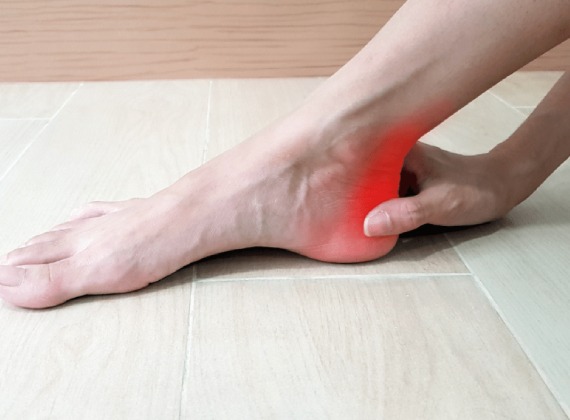Overview
Achilles tendinitis is an overuse injury of the Achilles tendon, the band of tissue that connects calf muscles at the back of the lower leg to your heel bone. Achilles tendinitis most commonly occurs in runners who have suddenly increased the intensity or duration of their runs. It’s also common in middle-aged people who play sports, such as tennis or basketball, only on the weekends.
Most cases of Achilles tendinitis can be treated with relatively simple, at-home care under your doctor’s supervision. Self-care strategies are usually necessary to prevent recurring episodes. More-serious cases of Achilles tendinitis can lead to tendon tears (ruptures) that may require surgical repair.

What is the Achilles tendon?
The Achilles tendon is the largest and strongest tendon in the body. It’s in the back of the heel, connecting the heel bone to the calf muscle. Tendons are long, tough, ropy, and fibrous tissues that connect muscles to bones. The Achilles tendon is named for the Greek god Achilles. The Achilles tendon helps you walk, run and jump by raising the heel off the ground. It’s very strong, but overstressing it can injure it.
What causes Achilles tendon pain?
Common causes of Achilles tendon pain are:
- Achilles tendinitis, inflammation (irritation) of the tendon.
- Achilles tendinosis, is when the tendon starts to degenerate (break down) because of unresolved Achilles tendinitis.
- Achilles tendon rupture, a tear or break in the tendon.
What is Achilles tendinitis?
Tendinitis is when a tendon becomes irritated or inflamed. Inflammation is the body’s response to injury or disease. Tendinitis can be very painful. It’s important to treat Achilles tendinitis. Otherwise, it can become a long-term, chronic problem, making it difficult to walk.
What are the types of Achilles tendinitis?
The two types of Achilles tendinitis describe which part of the tendon is affected:
- Noninsertional Achilles tendinitis: The fibers in the middle of the tendon start to break down, swell and thicken. This type of Achilles tendinitis affects people who are younger and more active.
- Insertional Achilles tendinitis: This type affects the lower part of the heel, where the tendon connects, or inserts, to the heel bone. It can affect anyone, even people who aren’t active. But it most commonly affects people who overuse the tendon, such as long-distance runners.
Who is at risk for Achilles tendon disorders?
Achilles tendon disorders are common sports injuries. People at high risk for Achilles tendon disorders include those who:
- Play sports, especially sports that involve quick stops and starts.
- Run or dance.
- Have jobs that put stress on their feet and ankles, such as laborers.
- Participate in sports less frequently (“weekend warriors”), leaving their bodies less used to the stress.
What causes Achilles tendinitis?
In Achilles tendinitis, overuse of the Achilles tendon causes swelling, irritation, and inflammation. You can get Achilles tendinitis by being active on your feet. It’s usually not related to a specific injury — it happens because of stressing the tendon repeatedly. Because it’s difficult to avoid using the Achilles, the body doesn’t have time to repair the injured tissue.
What are the symptoms of Achilles tendinitis?
Symptoms of Achilles tendinitis affect the lower leg above the heel. You might notice:
- Heel pain and ankle pain.
- Stiffness or tenderness in the tendon.
- Leg weakness.
- Swelling around the Achilles tendon.
How is Achilles tendinitis diagnosed?
Your healthcare provider will ask you about your symptoms and recent activity. They’ll look for signs of Achilles tendinitis or Achilles tendon rupture. They will check your range of motion and look for signs of bone spurs.
